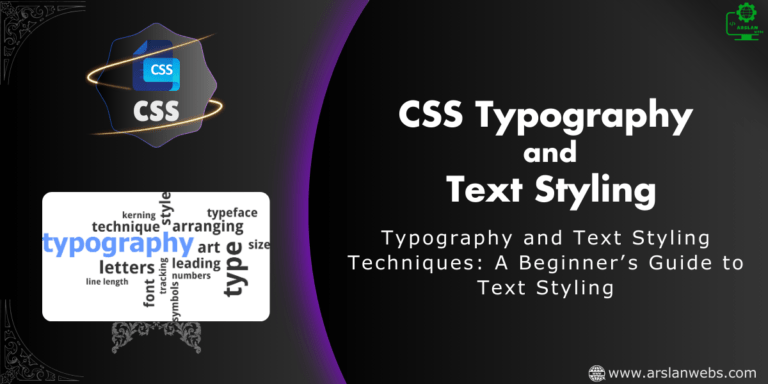Images are a powerful tool in web design, capable of grabbing attention, conveying information, and...
Read MoreFront-End Development
Front-end development is an important aspect of web development that is concerned with the creation of user interfaces and their experience. It is a unit that touches aspects of programming, design, and user psychology in one go to mesh websites to be both functional and aesthetically pleasing.
In this blog post, we will explore some basic elements of front-end development, technologies that comprise it, and some best practices that will allow you to create stunning web experiences. Through the process, you’ll end up with a clear picture of what front-end development is and how to get started.
What is Front-End Development?
Front-end development is the practice of implementing the part of a website that users actually interact with. It’s everything from the layout and design to interactive features and the overall experience. The main goal here is to produce a seamless and intuitive user interface for fostering better interactions.
Example:
When you visit a website, the buttons you click, the forms you fill out, and the images you see are all part of front-end development.
Core Technologies (Languages)
Front-end development relies on three primary technologies: HTML, CSS, and JavaScript.
HTML (HyperText Markup Language)
HTML is the foundation of any web page. It structures the content and defines elements like headings, paragraphs, and links.
CSS (Cascading Style Sheets)
CSS is used to style the HTML content. It controls the layout, colors, fonts, and overall visual appearance of the website.
JavaScript
JavaScript adds interactivity to web pages. It enables dynamic content changes, form validations, animations, and much more.

Key Responsibilities of a Front-End Developer
A front-end developer builds the visual and interactive elements of a website. This typically includes things like:
- Design Implementation: This entails the translation of design mockups into functional web pages by using HTML, CSS, and JavaScript.
- Responsive Design: Ensuring your websites are mobile-friendly and responsive across all devices and screen sizes.
- Performance optimization: Optimize the code, images, and other resources for the website performance.
- Cross-browser compatibility: The website should work uniformly across all web browsers.
- User Experience (UX) Design: Focused mostly on making the website easy to use and accessible to encourage satisfaction among users.
Popular Front-End Frameworks and Libraries
Front-end developers usually work with frameworks and libraries that make the development much easier by infusing important features into the project.
React.js
React.js is widely used as a popular JavaScript library to build user interfaces, in particular for single-page applications. It enables developers to build reusable UI components.
Angular.js
Angular.js is a full-fledged framework for building dynamic web applications. It provides a structured approach to front-end development with its features like two-way data binding and dependency injection.
Vue.js
Vue.js is a progressive framework for developing user interfaces. It is so versatile that it can be integrated into even already existing projects and libraries.
Bootstrap
Bootstrap is a front-end framework bundled with pre-designed components and responsive grid systems, which will make mobile-first website development easier
Best Front-end Development Practices
- Semantic HTML: Use of the semantic HTML tags helps in more accessibility and better SEO.
- Modular CSS: Write modular and reusable CSS to keep the codebase maintainable.
- Minify JavaScript: Improve the performance of JavaScript by minifying and compressing files.
- Responsive Design: Implement responsive design techniques to ensure the website looks good on all devices.
- Cross-browser testing: Test the website in different browsers to make sure it consistently performs.
- Version control: Use version control systems, such as Git, to handle and track changes with code.
Conclusion
Front-end development is a key area when it comes to making compelling and user-friendly websites. Learning Core technologies, understanding your Responsibilities, and following the best practice will enable you to build appealing and functional web pages that bring out user experience excellently.

Front-End Related Courses
Related Posts
CSS Colors Explained: A Beginner’s Guide to Brighten Your Web Pages
Colors are everywhere on the web—from the text on your favorite blog to the backgrounds...
Read MoreIntroduction to CSS: Styling the Web
CSS, or Cascading Style Sheets, is a stylesheet language used to control the appearance of...
Read MoreCSS Gradients: A Beginner’s Guide to Linear, Radial, and Conic Gradients
Introduction: Gradients in CSS are a great way to make your websites more colorful and...
Read MoreJavaScript Non-Primitive Data Types: A Complete Guide to Objects, Arrays, and Functions
Introduction: Have you ever wondered how JavaScript handles complex data? If you’ve mastered the basics,...
Read MoreCSS Typography and Text Styling Techniques: A Beginner’s Guide to Text Styling
Typography is a key part of web design that can transform the look and feel...
Read MoreResponsive Design Foundations in HTML: Building Websites That Adapt to Every Screen
Responsive design is a web development approach that ensures a website’s layout and content adapt...
Read MoreCSS Integration with HTML: A Beginner’s Guide to Styling Your Web Pages
In web development, the look and feel of your website play a crucial role in...
Read MoreCSS Layout Basics: Understanding Display and Positioning for Beginners
In this guide, you'll learn about two key concepts in CSS: display properties and positioning...
Read MoreUnderstanding Semantic HTML: Boosting Accessibility and SEO with HTML5 Elements
Semantic HTML represents one of the key roles in modern web development. Using the appropriate...
Read MoreJavaScript Primitive Data Types: Unlock the Key to Better Coding
Data types are crucial because they ensure that your program behaves correctly. If you mix...
Read MoreEnhancing Your Web Pages with Multimedia: An Introduction to Audio and Video in HTML5
In the modern web landscape, multimedia content is essential. Whether you're watching a tutorial video,...
Read More











